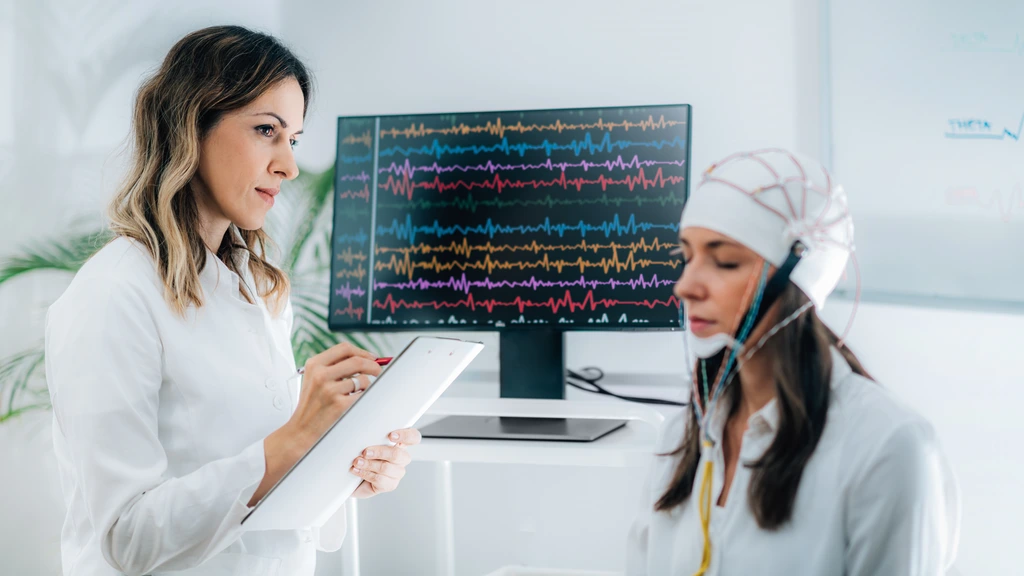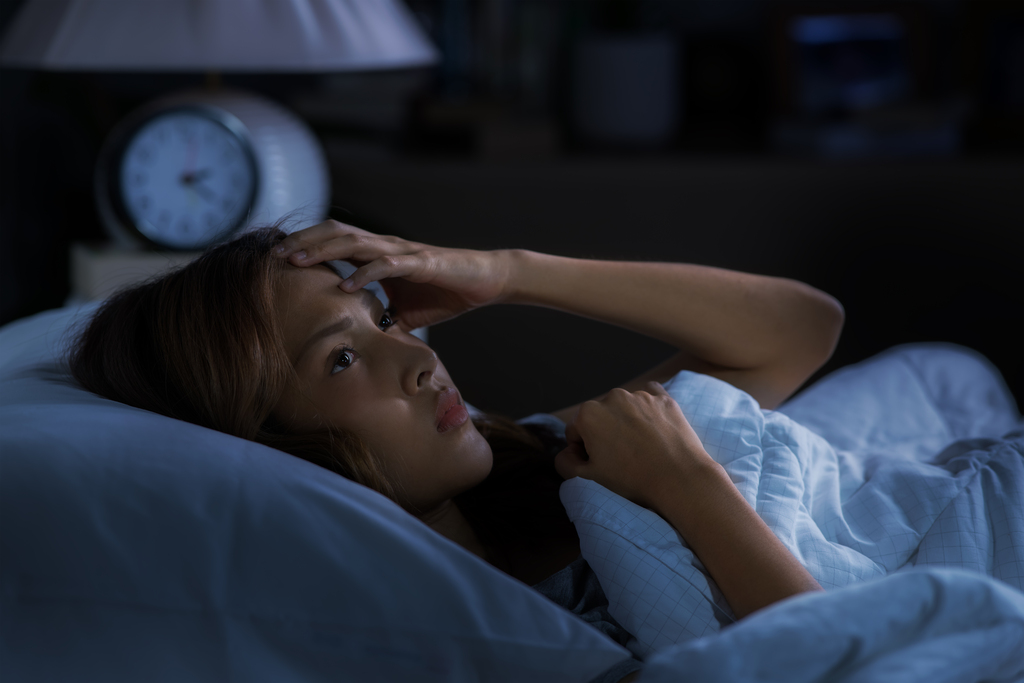What Is a Seizure?
A seizure is an intense and sudden burst of electrical activity in the brain that alters the communication path between nerve cells. Seizures affect muscle movements, mobility, behaviour and level of awareness. The effects of a seizure depend on which part of the brain is impacted.
Some of the most common symptoms during a seizure include:
- Uncontrollable movements
- Muscle stiffness
- Shaking or blinking uncontrollably
- Loss of bladder control
- Unusual sensations
- Loss of awareness
Seizures may last for a few seconds and up to a few minutes and usually don’t require medical attention. However, if a seizure lasts longer than 5 minutes or happens for the first time, it is considered an emergency.
Depending on the types of seizures, they can be categorised into generalised and focal seizures.
Focal Seizures (Partial Seizures)
Focal seizures happen on one side of the brain, also called partial seizures. During a focal seizure, people may lose the ability to move and react, but there is usually no loss of awareness. However, there is another type of focal seizure that disrupts your state of awareness, called a focal impaired awareness seizure.
Focal onset seizures are categorised into complex, simple and secondary generalised seizures depending on the symptoms.
- Complex partial seizures – invoke confusion and cause dizziness, preventing people from responding to questions and can last for a few minutes
- Simple focal seizures – cause unusual sensations of smell and taste and may involve twitching of parts of the body
- Secondary generalised seizures – start in one area of the brain and slowly progress to other parts of the brain
What to Do in Case of a Focal Seizure?
In a case of focal seizure, people may experience a loss of awareness of their environment or their actions. Also, some may experience uncontrolled body movements, moving without a direction, repeated swallowing or lip-smacking.

But what should you do in the case of a focal seizure?
- Always keep the person experiencing a seizure away from danger (like water, fire or heights)
- Wait and accompany them until the seizure is over
- Remain calm
- Describe and remember everything that happens during the seizure
- Time the seizure
Focal awareness seizures usually don’t affect people’s consciousness, so it is essential to remain calm, positive and reassuring from the beginning until the end of the episode.
Generalised-Onset Seizures
Generalised onset seizures may occur as focal seizures but progress to both sides of the brain. They begin during early childhood, and they are rarely hereditary. However, excessive alcohol consumption, lack of sleep and other factors may contribute to seizure activity, especially for people with genetic predispositions.
Some people experience an “aura” before the seizure starts, which is one of the biggest warning signs that a seizure is about to occur. The “aura” is followed by unusual sensations and feelings, after which symptoms of a seizure appear, including:
- Fast blinking
- Loss of consciousness
- Uncontrolled muscle movements
- Body convulsions or epileptic spasms
- Repetitive movements
- Blue lips
Types of Generalized-Onset Seizures
According to the data from the International League against Epilepsy, there are a few different types of generalised seizures. The symptoms and signs can vary from person to person, and the seizure can also last from a few seconds to a few minutes.
Below we discuss each seizure and the necessary safety precautions.
Absence Seizures (Petit Mal Seizures)
Absence seizures, known as petit mal seizures, usually appear in younger children. It is also known as childhood absence epilepsy, and research shows that most children outgrow it by the time they reach their teenage years.
Tonic-Clonic Seizures
Tonic-clonic seizures are a common type of epileptic seizure, also called grand mal seizures. These seizures begin in both hemispheres simultaneously. They can also begin as focal onset seizures, starting at one part of the brain and then spreading to the other.
The tonic-clonic seizures happen in two phases: a tonic phase and a clonic phase. The tonic phase entails losing awareness and stiffening the muscles, often causing the person to fall on the floor. The clonic phase includes uncontrolled body movements, biting hard on your tongue and mouth, difficulty breathing and losing bowel control.
These seizures last one to three minutes and may require emergency assistance.
How to Help Someone During a Tonic-Clonic Seizure
If someone around you has a tonic-clonic seizure, you must be prepared. Here is what you should do to help:
- Don’t put your fingers in their mouth
- Secure the area and place them somewhere safe
- Turn them on their side to prevent choking
- Track how long the seizure lasts
- Remain calm and wait until the person has fully recovered
Tonic and Atonic Seizures
Tonic seizures start by affecting the muscles and cause stiffening. The seizures last up to 30 seconds, and typical symptoms include:
- Decreased awareness
- Feeling stiffness in the back, arm or leg muscles
- Sudden falling due to unresponsive muscles
Sometimes, these seizures can affect people in their sleep.
Atonic seizures affect people’s muscle tone and cause muscles to go limp and loose suddenly. These seizures last up to 15 seconds, and the common signs of an atonic seizure include:
- Head tilting forward or to one side
- Muscles become loose and limp
- Sudden falling
- Dropping eyelids
- Becoming unable to hold anything
Some people can feel the onset of the seizure, a warning sign for them to sit or lie down and wait until the episode ends.
Non Epileptic Seizures
Non-epileptic seizures are usually not caused by an alteration of the brain activity. These seizures occur due to emotional distress or other psychological causes. A non-epileptic seizure may look like the person is having a tonic-clonic seizure that is followed by shaking, falling or spasming.
Dissociative Seizures
Dissociative seizures cause sudden and uncontrolled movements and strong behavioural reactions. These seizures are not caused by an imbalance of electrical activity in the brain. They are defined as a somatic reaction to a specific trigger like a strong emotion, thought or a complex social situation. Dissociative seizures affect up to 30 in every 100,000 people.
Dissociative seizures are different for people, but most report experiencing:
- Hyperventilation or short, deep breaths
- Palpitations
- Loss of bladder control
- Shaking or experiencing jerking movements
- Staring in one spot
Dissociative Seizures Diagnosis
Diagnosing dissociative seizures is a complicated task. Many physicians require video recordings, detailed explanations and descriptions of the seizure. Also, physicians require an EEG (electroencephalogram testing) to detect abnormal electrical activity in the brain.
Dissociative Seizures Treatment and First Aid
Dissociative seizures can be managed through various therapies such as behavioural, talking and cognitive therapy. Dissociative seizures are also considered non-epileptic seizures and require the same understanding by the community. People with these types of seizures face many challenges, so embracing diversity and accepting people through their experiences can lead to social equality and inclusion.
Myoclonic Seizures
Myoclonic seizures cause sudden muscle contractions, but unlike the other types of seizures, myoclonic seizures don’t affect people’s state of awareness or consciousness. These seizures affect the muscle tones to one or both sides of the body depending on where the electrical activity imbalance is happening.

Myoclonic seizures can be treated with medication. The common symptoms of a myoclonic seizure include:
- Uncontrolled rhythmic movement
- Seizures after waking up
- The feeling of electricity running through the body
- Quick muscle jerking
Difference Between a Myoclonus (Muscle Spasm) and a Myoclonic Seizure
Myoclonic seizures cause fast, jerky movements in one or more muscle groups. It often causes an electrical shock-like sensation or muscle spasm, but it is unrelated to underlying medical conditions and can affect people of all ages. These seizures often happen due to lack of sleep, large consumption of alcohol, mental or physical distress and feelings of frustration and intense excitement. However, a myoclonus is a spasm that usually results from epilepsy or another condition.
Best Practices in Assistance with Seizures
When talking about seizures, people often think of a tonic-clonic episode. It is essential to understand that seizures come with different symptoms and to be aware of the different types of seizures.
However, there are certain rules that apply to helping a person experiencing any seizure, such as:
- Remove any potentially dangerous objects
- Remove all sharp objects around the person
- Loosen belts, ties, scarves to ease breathing
- Don’t try to stop their movements
- Don’t put water or food in their mouth
- Don’t provide mouth-to-mouth breathing
- Place the person on their side
- Remain present and calm until the person is fully recovered
Living with epilepsy and seizures requires care support but also acceptance from the community. People who experience seizures face daily challenges that most of us are unaware of. The first step towards helping people with seizures is to embrace their differences and always be prepared to react and provide support. All of us can help empower people to use their skills, abilities and ambitions to impact society.
Promoting Safety and Independence with Nurseline Community Services
Seizures can affect anyone. Many people outgrow seizures in early childhood, while others manage them throughout their lives. In some cases, people need daily assistance and support in daily life activities.
At Nurseline Community Services, we understand that acceptance is the key to a productive and independent life. Therefore, we deliver CQC-regulated, high-quality services for people with epilepsy and complex emotional needs. We aim to guide people on their journey towards living an independent and fulfilling life. Our clinicians are dedicated to providing humanised and holistic care specifically designed to cater to people’s unique needs.
Contact us today to learn more about how our team can assist you, or visit our offices in Birmingham, Gloucester and Bristol.




